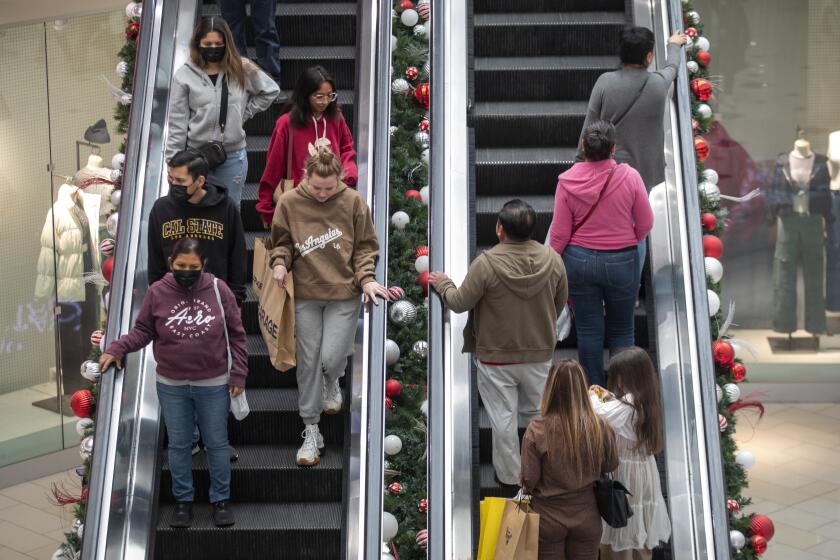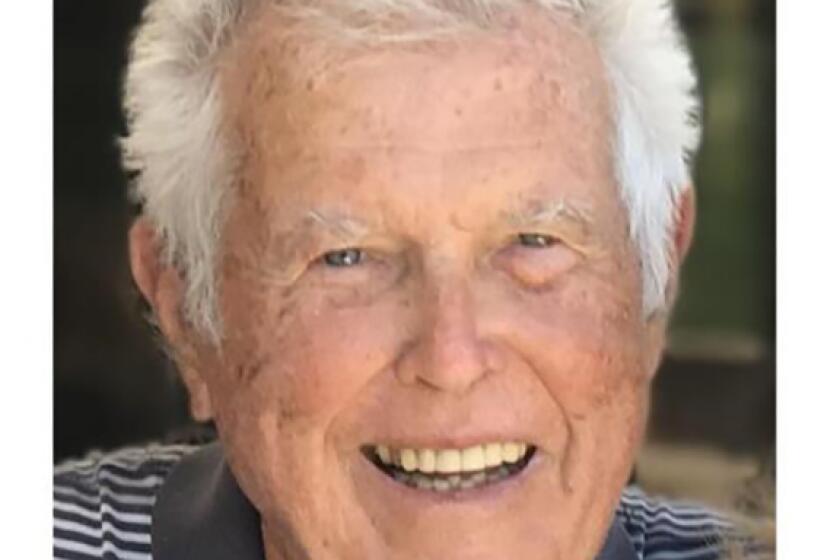Courtrooms With No Paper to Chase
Once, about six months ago, Orange County Superior Court Judge William F. McDonald’s courtroom was so full of lawyers’ papers and boxes and binders that building security feared the floor would cave in.
There was so much paper that it was difficult for the judge to keep order. “Boxes were stacked just everywhere,” McDonald said. “Just to find one document . . . took so much time.”
Technology, however, may be changing both the landscape and the pace of jurisprudence in a new five-courtroom facility in Santa Ana where judges like McDonald will hear complex business cases, matters that typically come with reams of paper.
The Civil Complex Center is being billed as the state’s first “paperless” court facility, a place where lawyers will use laptops and LCD screens to present cases, view evidence and scroll back through testimony while questioning witnesses.
At the new Flower Street facility--which officially opened Monday in a preview for lawyers, judges and the media--attorneys will use PowerPoint computer software and video clips to argue for their clients instead of rummaging through boxes for a document or setting up bulky projectors.
Richard D. Aldrich, a state Court of Appeal jurist who helped show off the new courtrooms, suggested the high-tech facility is a blueprint for the legal battleground of the future. “It is my fervent hope that California will become the model for the nation in handling complex litigation.”
The new courtrooms are expected to accelerate the pace of cases by as much as 20%, save paper, make court information more accessible to the public and improve the courtroom experience for jurors, especially those called to serve in tedious business trials, lawyers and court officials said.
“It will be much more engaging for the juror and it will be easier for me to keep the juror interested in a complicated case,” said Andrew Guilford, a Costa Mesa business lawyer.
But there are concerns that the gadgetry could eclipse important moments in a trial or even subtle nuances.
“There are some important issues about all the extra stuff--video and pictures. You don’t want all the stuff to be distracting to the juror and obscure your point, or be misleading,” Guilford said.
The new courtrooms were designed to streamline the judicial process. In a mock trial Monday, officials demonstrated how a piece of evidence, displayed on one of many computer screens mounted throughout the courtroom, could be altered in seconds to suit a judge’s order. In traditional courtrooms, tracking down a single document can sometimes be a painstaking effort.
At the new facility, lawyers will use equipment that was installed at no cost by a private company. Lawyers will pay a fee of roughly $500 a day to Rockville Center, N.Y.-based Doar Inc. to rent the multimedia equipment, though attorneys can elect to use traditional low-tech, no-cost proceedings.
The new courts will be used for civil cases deemed to need “exceptional judicial management,” which officials said translates to cases involving many attorneys or a large amount of paperwork.
The computer equipment sits in stark contrast to the wood and veneer of the traditional courtroom. On McDonald’s courtroom desk are two full-size, flat-screen monitors and a smaller book-size screen. The court reporter’s transcriber is hooked to a laptop. And jurors will sit before computers with the ability to read testimony as it scrolls across the screen.
“All of this,” said John B. Hurlbut Jr., a Costa Mesa attorney, “will make it easier for everybody, and the entire court system.”
More to Read
More to Read
More to Read
Start your day right
Sign up for Essential California for news, features and recommendations from the L.A. Times and beyond in your inbox six days a week.
You may occasionally receive promotional content from the Los Angeles Times.






